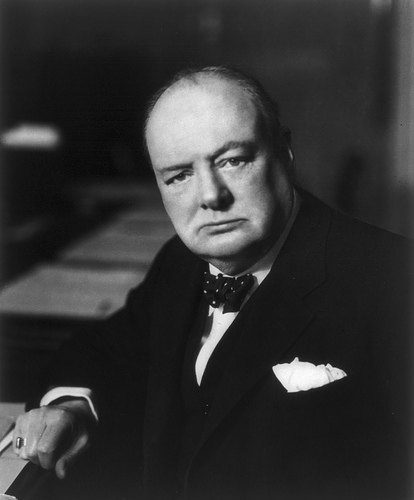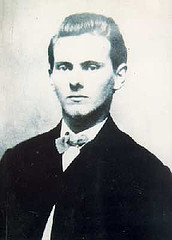On the way to one of his many duels, Georges Clemenceau requested a one-way railway ticket.
“Isn’t that a little pessimistic?” asked his second.
“Not at all,” Clemenceau said. “I always use my opponent’s return ticket for the trip back.”
On the way to one of his many duels, Georges Clemenceau requested a one-way railway ticket.
“Isn’t that a little pessimistic?” asked his second.
“Not at all,” Clemenceau said. “I always use my opponent’s return ticket for the trip back.”

There’s a passage in Seneca’s Medea that seems to have foretold the discovery of America 1400 years before the event:
Venient annis secula seris,
Quibus Oceanus vincula rerum.
Laxet, et ingens pateat tellus
Tethysque novos detegat orbes
Nec sit terris ultima Thule.
“The times will come in later years when ocean may relax the chain of things, and a vast continent may open; the sea may uncover new worlds, and Thule cease to be the last of lands.”

A son of William the Conqueror, William II of England is remembered mostly for the curious manner of his death. In August 1100, William organized a hunting expedition in the New Forest. In sharing arrows with the Anglo-Norman nobleman Walter Tirel, he said, “It is only right that the sharpest be given to the man who knows how to shoot the deadliest shots.” That was tempting fate, apparently: The king did not return after the hunt, and his body was discovered the next day with an arrow piercing his lungs.
Walter fled to France, but chroniclers generally don’t consider him a murderer. He was a skilled bowman, unlikely to fire impetuously, and the abbot who sheltered him in France heard him swear repeatedly that he had not been in the part of the forest where the king was hunting. On the other hand, William’s brother Henry was also in the hunting party, and he stood to gain (and did) from William’s death.
So what really happened? We’ll never know.
In 1994, Leonard Gordon showed that all 37 presidential surnames to date can fit into a 22 × 18 rectangle:

Zeno once caught a slave stealing and began to beat him.
Knowing the philosopher’s penchant for paradoxes, the slave cried, “But it was fated that I should steal!”
Zeno said, “And that I should beat you.”
A “decalogue of canons for observation in practical life,” sent by Thomas Jefferson to the new father of a baby boy:
It’s not clear what a smooth handle is. Possibly it refers to a saying by Epictetus: “Everything has two handles, one by which it can be borne, another by which it cannot.” Or possibly Jefferson was referring to the need for civil discourse.
See also Ben Franklin’s “13 virtues” and Poor Richard’s lesser-known maxims.

A proud mother once remarked that her baby looked exactly like Winston Churchill.
Churchill told her, “Madam, all babies look like me.”
In 1975, a veterinary student came across a curious bone in south-central Chile, about 36 miles east of the Pacific. It proved to be that of a mastodon, and as archaeologists explored the discovery site, they found the remains of ancient hearths, a brazier pit, and a 20-foot tentlike structure made of wood and animal hides.
The site is estimated to be 12,500 years old. If that’s accurate, these people occupied Chile a full millennium before humans are generally thought to have colonized the Americas. Who were they?

Jesse James once sought shelter at a lonely farmhouse. The widow there apologized for her poor hospitality. She said she had very little money and despaired of paying the debt collector, who was coming imminently to demand $1,400.
James gave her $1,400 and told her to get a receipt. Then he hid outside and watched the road.
The debt collector arrived, looking grim, and entered the house. A few minutes later he emerged, looking pleased.
James accosted him, took back the $1,400, and rode off.

On July 18, 1969, two days before the first lunar landing, presidential speechwriter William Safire composed the following text to be read by President Nixon if astronauts Neil Armstrong and Edwin Aldrin were stranded on the moon:
Fate has ordained that the men who went to the moon to explore in peace will stay on the moon to rest in peace.
These brave men, Neil Armstrong and Edwin Aldrin, know that there is no hope for their recovery. But they also know that there is hope for mankind in their sacrifice.
These two men are laying down their lives in mankind’s most noble goal: the search for truth and understanding.
They will be mourned by their families and friends; they will be mourned by the nation; they will be mourned by the people of the world; they will be mourned by a Mother Earth that dared send two of her sons into the unknown.
In their exploration, they stirred the people of the world to feel as one; in their sacrifice, they bind more tightly the brotherhood of man.
In ancient days, men looked at the stars and saw their heroes in the constellations. In modern times, we do much the same, but our heroes are epic men of flesh and blood.
Others will follow, and surely find their way home. Man’s search will not be denied. But these men were the first, and they will remain the foremost in our hearts.
For every human being who looks up at the moon in the nights to come will know that there is some corner of another world that is forever mankind.
Safire also suggested that Nixon call the “widows-to-be” before the speech, and that a clergyman should commend the astronauts’ souls to the “deepest of the deep” when communications ended.